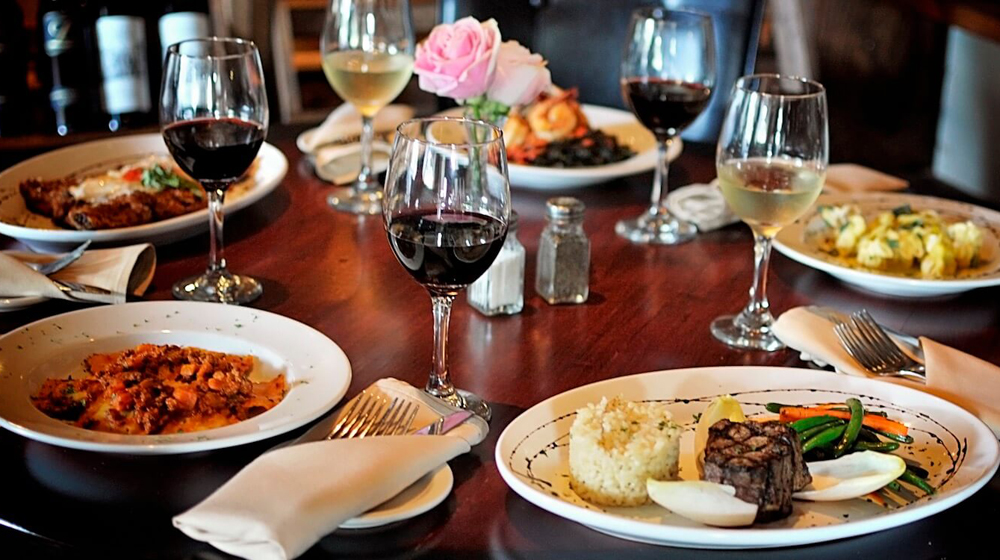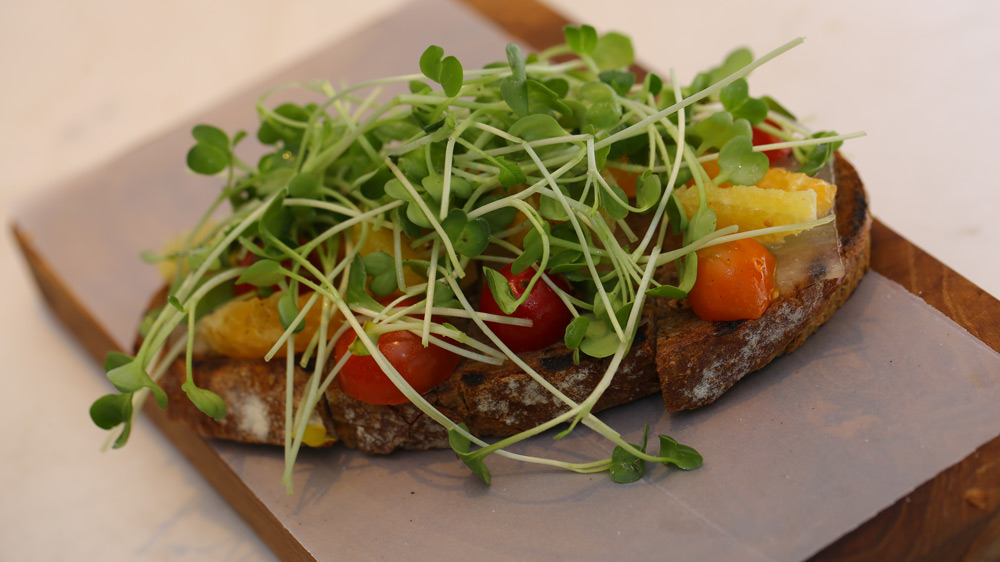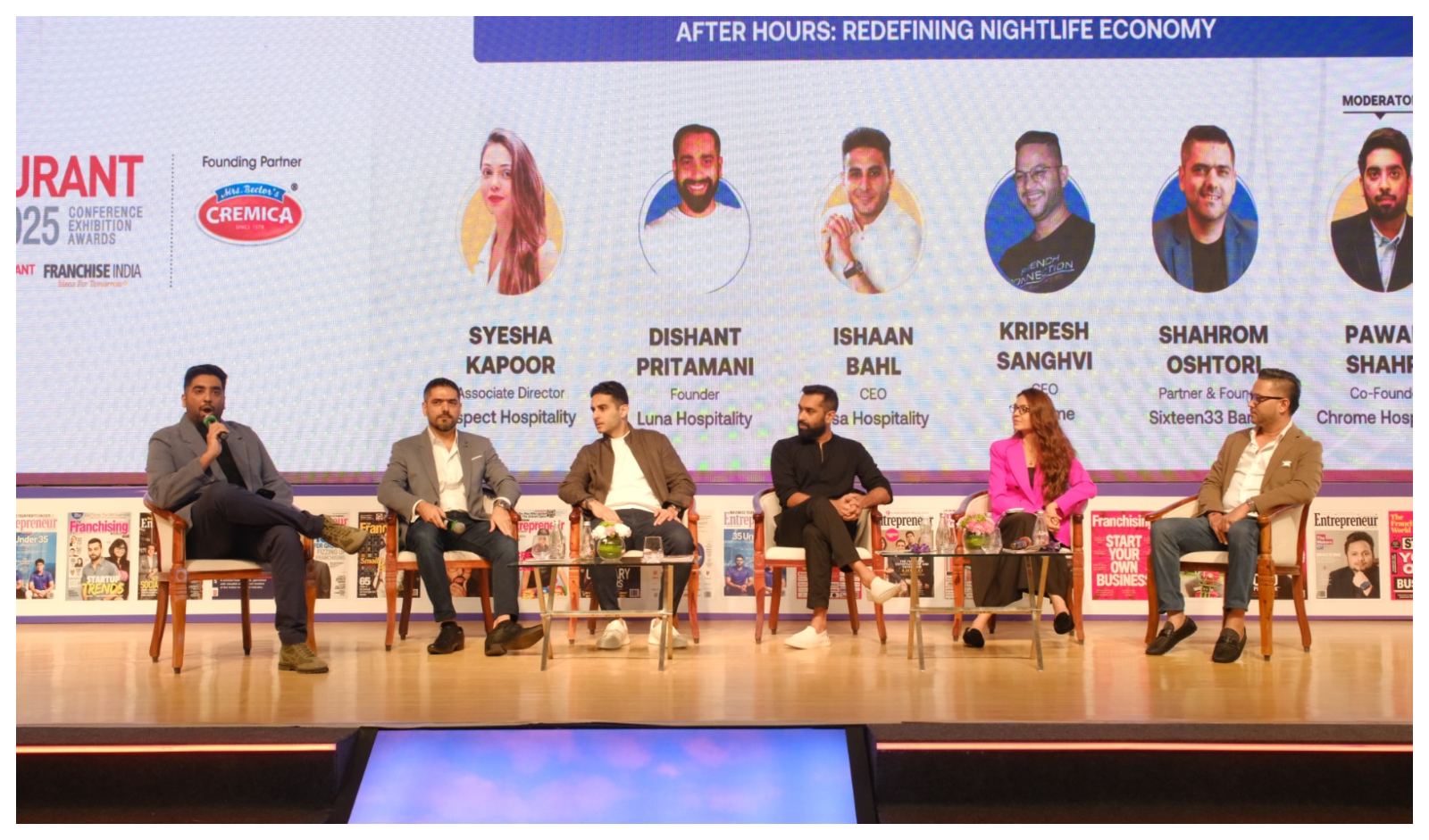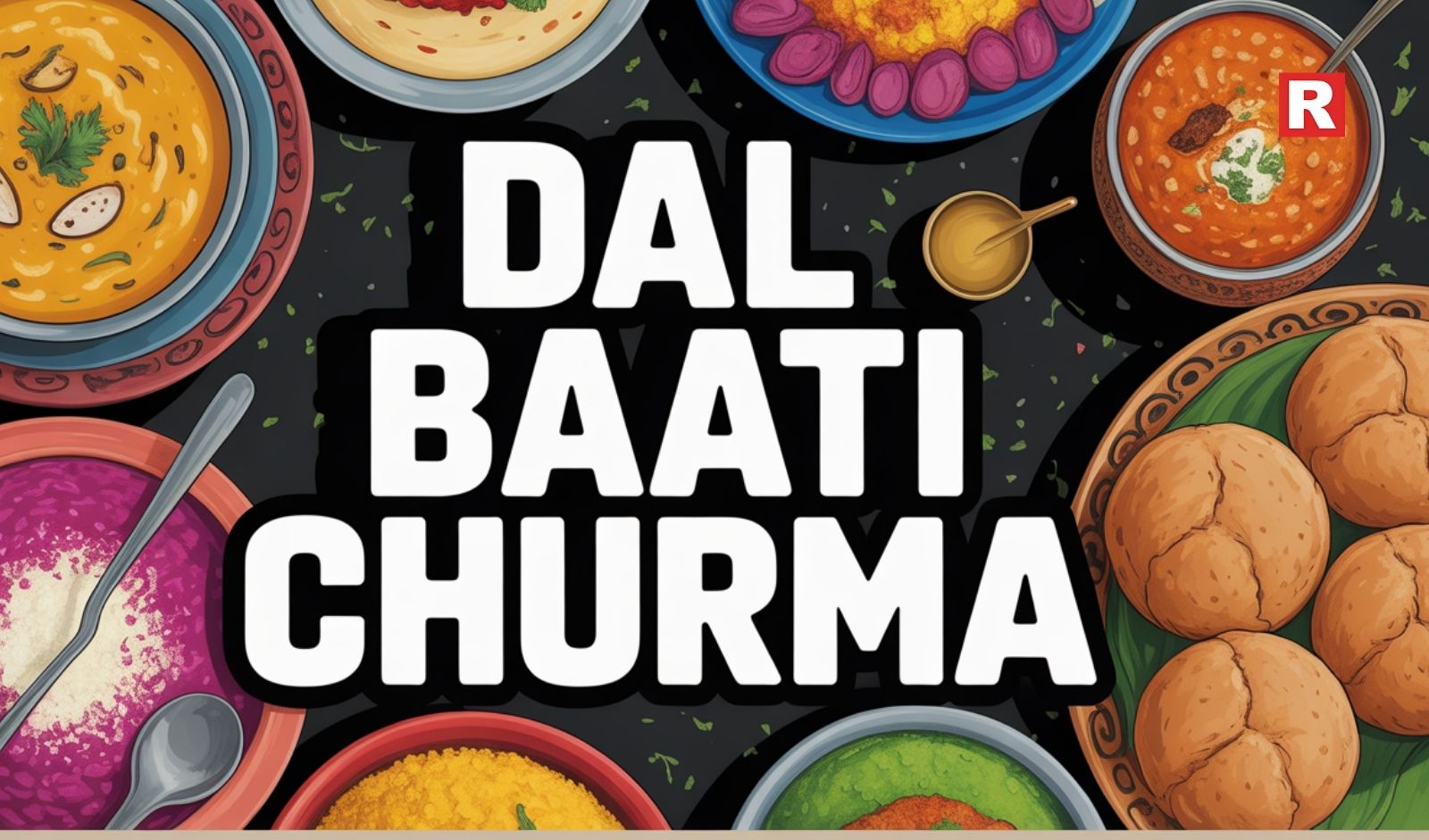
The role of storytelling for traditional dishes has transformed dramatically. It's no longer just about listing ingredients; it's about transporting the modern Indian diner to the dish's origin, sharing its cultural significance, and highlighting the passion behind it. Going back to roots is all about emotional experience that fosters deeper connection among the consumers. It’s like remembering the nostalgic experiences you once had or the indulgence. Around 70% of the restaurants in India are presenting traditional dishes to their diners. This shows that the preferences have evolved over the years. In the end, it’s all about comfort food.
Earning through Social Media
Storytelling has evolved over the years. Earlier, it was about word of mouth and now social media play an important role in reaching wide range of audiences via smart storytelling.
“Social media has been a game-changer, allowing us to use visuals, short videos, and personal anecdotes to create deep, emotional connections, through stories behind these dishes,” shared Celebrity Chef Saransh Golia. The way of storytelling has evolved in a way wherein people focus on how the dishes or recipes were passed to them from generation to generation. They are marketing in a way to reach the right consumers.
“Social media play an important role in reaching the customers in a democratic way. It’s about more reach and earning more revenue,” mentioned Chef Sanjeev Kapoor.
Commenting on this, Celebrity Chef Pankaj Bhadouria said, “Everything is on social media. So, to connect to something which is real is going back to roots. Suddenly people are popularizing these dishes.”
How brands make them unique?
In every restaurant, there is a change in presenting the dishes. The menu is a device to begin with. Kapoor highlighted, “Earlier, people use to present the dishes in a verbalized manner. The tools have changed. QR Code is added, photos, videos have been added. The change is drastic. The Story use to be the description of the dish. The origin, ingredients, sustainability, authenticity, sensitivity and there are ways wherein they are focused on trending items or paired with what’s trending.”
The Challenges
Educating the consumers about the dishes can be a task. So, the chef should have insights about the origin and the significance of the dish. The pricing may differ from city to city; it can be bit challenging to source the ingredients.
“Challenges include maintaining the authenticity of Indian recipes while making these dishes relevant for contemporary palates. We overcome this by staying true to the dish's essence but presenting it in engaging, relatable formats, focusing on genuine narratives that resonate,” added Golia.
Also, it is quite certain that the future lies in more immersive & interactive storytelling. Think live streams from kitchens or AR/VR experiences exploring a dish's history, and Al-driven personalized narratives that connect diners even more deeply to the food and the people who create it.

Tea and dessert pairings have become an essential part of modern culture. They give people a little comfort, but there’s also this bit of excitement in finding flavors that just click. A lot of people actually look forward to seeing how a hot cup of tea will pair with something sweet, rich, or fruity. This curiosity results in creativity, to make tea and dessert pairings that feel a little more thoughtful and something with a bit of personality.
Picking the right tea and dessert can make the menu feel special. The right pairing can mellow out a bold dessert or make the flavors pop. Tea behaves differently with each kind of sweet, which gives room to experiment and present combinations that feel both familiar and refreshing.
This article is for anyone who loves cafés or wants to try different dessert and tea combos. So, let’s dig into ten solid dessert and tea pairings and see how you can make any menu a little more interesting.
Read more: 12 Refreshing Herbal Tea Blends You Must Try This Season
Understanding How to Match Flavours
A good pairing starts with understanding how flavors work together. Tea is full of aromatic compounds, and these react in different ways to the sweetness, tartness, or richness in desserts. Take a bright, citrusy tea, for example, it sharpens up a buttery tart. A malty tea smooths out the punch of dark chocolate. Texture matters too. A crumbly biscuit feels better with a tea that cleans your palate, while a creamy cheesecake calls for something soft and floral.
You’ve also got to think about intensity. Serve a delicate white tea with a heavy brownie, and it just disappears. Put a strong Assam next to a mild sponge cake, and the cake gets lost. The real goal here is to bring harmony between the flavors. Sometimes that means matching similar qualities or balancing contrasts. Some pairings feel classic, others bring something new, like serving a light herbal tea with a rich dessert and letting that gentle tension wake up your taste buds.
Common Tea Types and Their General Behaviour
Most cafés pour all kinds of teas, each with its own personality. Black teas have body and muscle, and they can take on strong desserts. Green teas come with grassy or nutty notes, better with lighter sweets. Oolong is a wild card, sometimes floral, sometimes roasted. White teas are soft and gentle, perfect for mild desserts. Herbal teas add aroma without caffeine, ideal for certain pastries. And then there’s chai, loaded with spices, which pairs beautifully with warm, earthy treats.
Knowing these broad types helps you start building good pairs. Once you pick a category, you can refine by looking at the specific tea you’ve got.
Know more: Top 10 Tea Brands in India That Every Chai Lover Swears By
The Ten Featured Pairings
1. Assam Tea with Chocolate Cake

Assam is bold and malty, which is perfect for a dense chocolate cake. The tea’s strength cuts through all that richness and brings the whole thing into balance. If you’re after a heavy afternoon treat, this is the combo. Cocoa and deep tea notes play off each other, satisfying but not overpowering.
2. Earl Grey with Lemon Tart

Earl Grey’s got that hit of bergamot, so it already leans towards citrus flavors. Pair it with a lemon tart, and the flavors click. The dessert’s tartness lifts the tea’s aroma, making this combo crisp and refreshing. It is just right for a sunny day.
3. Masala Chai with Carrot Cake

Masala chai is all about spice, and it’s a natural partner for carrot cake’s gentle sweetness. Cinnamon, ginger, and clove all echo the cake’s warm, earthy flavors. It’s indulgent, a bit nostalgic, and great for anyone who wants classic comfort with a little twist.
4. Jasmine Tea with Vanilla Sponge

Jasmine tea brings a soft, floral note that doesn’t fight with the mild vanilla sponge. The whole thing feels delicate and calming. This is your go-to if you want something light. It is great for early evening or after dinner.
5. Matcha with Shortbread

Matcha packs a punch of flavors. It is grassy, a little bitter, and bold. But put it next to rich, buttery shortbread, and suddenly, it all makes sense. The cookie softens matcha’s sharp edges, while the tea brings out something deeper in the biscuit. This pairing is a good introduction for customers who want to try matcha without overwhelming their palate.
6. Darjeeling with Berry Tarts

Darjeeling comes with its own natural fruitiness, almost like a muscat grape. Serve it with a berry tart, and the tea brightens up the berries, making everything taste fresh and lively. This combo shines in summer. It is light, refreshing, and just sweet enough.
What's new: Top 10 Japanese-Inspired Matcha Desserts to Try
7. Chamomile with Honey Cookies

Chamomile’s all about calm, with soft floral notes that are not overwhelming. Pair it with honey cookies, and you get a mellow sweetness that matches the tea’s gentle vibe. It’s the kind of pairing people gravitate toward in the late afternoon or evening when they want to unwind.
8. Oolong with Almond Pastries

Oolong teas can go in lots of directions: sometimes floral, sometimes toasty, but they almost always get along with almonds. Almond pastries have that warm, nutty aroma, and oolong slides right in, adding complexity without stealing the show. It’s a little bit fancy, but still easy to enjoy.
9. Mint Tea with Dark Chocolate Mousse

Mint tea slices through the richness of dark chocolate like nothing else. Every sip keeps your palate clean, so the mousse never gets too heavy. Plus, there’s this cool, fresh finish after each bite. This is the magic of mint and chocolate together.
10. Rose Tea with Pistachio Baklava

Rose tea smells like a bouquet, and that floral sweetness pairs perfectly with pistachio baklava. The tea lifts the richness of the pastry, letting the nutty flavors shine through. It’s lush and special, but not over the top.
Check out: Top Famous Indian Desserts You Can Have After Your Meal
How to Make a Healthy Dessert With Just 5 Ingredients
Tips for Creating Café-Style Pairings at Home
- Take a sip of the tea before you pick a dessert. Get a feel for its strength first.
- Rich desserts go best with bold teas, while lighter sweets work well with more delicate brews.
- It’s smart to have a few go-to teas on hand, like Assam, jasmine, or mint.
- Serve your tea at the right temperature. That way, you don’t lose any of its aroma.
- Try out different pairings with friends and see what you all actually enjoy.
- Start simple with your pairings. Once you get the hang of it, you can play around with more complex matches.
Presentation and Plating Suggestions
- Use simple teaware that showcases the colour of the tea.
- Plate desserts neatly to create a café-style appearance.
- Add small garnishes such as berries, herbs, or a dusting of sugar.
- Choose cups that feel comfortable to hold, especially for warm teas.
- Use natural light whenever possible to enhance the visual appeal.
Health and Wellness Angle
Tea and dessert pairings can also fit comfortably into a balanced routine when chosen with a little care. Tea isn’t just about the flavor. Some help you relax, others give you energy, and a few even settle your stomach after a big meal. Green tea, for example, is packed with antioxidants that help your body deal with stress. Herbal teas like chamomile or peppermint are great for soothing your stomach and clearing your mind, especially after you eat. Even black tea, as long as you skip the cream and sugar, gives you a boost without the jitters you get from coffee.
Dessert doesn’t have to be a guilty pleasure, either. You can swap in a little less sugar, use fruit, or try whole-grain recipes that still taste good but feel lighter. Smaller portions help, too. It’s all about enjoying the treat, not going overboard. Plus, a cup of warm tea with dessert really does the trick. It makes rich sweets feel less heavy and helps your body handle them better. When you put a little care into your choices, tea and dessert turn into a small, mindful break that’s good for both comfort and well-being.
Seasonal Pairing Ideas
In winter, go for spiced teas and serve them with warm desserts like ginger cake or apple crumble. When summer rolls around, pour yourself a glass of iced tea and grab a citrus tart or a berry pastry. During the monsoon, nothing beats a cup of aromatic tea paired with crisp cookies or nutty treats. And for festivals? Match regional sweets with teas that bring out their best flavors.
Learn more: 10 Famous Indian Sweets from Different States
Sweet Sips Ahead
Pairing tea with dessert at home adds a cozy, café-like feel to your day. Once you get the hang of how flavors and textures play together, it’s actually fun to experiment. Some days call for bold flavors, others for something gentle. There’s always a combo that suits your mood. Honestly, making these little choices turns an ordinary tea break into something special, a small ritual that makes life feel just a bit more thoughtful.

The pandemic has rocked the restaurant industry and showed just how agile it isn’t. Now, several months into the pandemic, we can see how the restaurant industry will be permanently changed. In many cases, the pandemic is a chance for restaurants to get inclined towards sustainability and taking their hygiene one notch up.
Diners are looking for restaurants to be transparent about their cleanliness procedures, so restaurants must use clear optics of what they are doing to keep diners safe. Customers are looking for things like single-use menus, disposable silverware, signs placed on tables that have been sanitized, hand sanitizing stations and employees wearing masks. Most importantly sustainability will take the front seat and restaurants opting for sustainable practices may gather more points in the future.
Time to give back to nature
Nidhi Nahata, Founder, Justbe Resto Cafe feels that being sustainable is a big step in the preservation of resources. “Today, people are drifting away from glamorous and blingy things and inclining more towards sustainable eating, clothing, etc. There is increased adoption of social responsibility and awareness about the importance of living with nature rather than exploiting it,” she added.
At Justbe, the team function in accordance with the environment by firstly serving food designed for the body by nature, using cutlery that is reusable, like steel straws (washed regularly), avoiding the use of plastic for dine-In, deliveries, and take-aways.
Nahata further informed that on the business front, consumers are displaying greater respect and loyalty towards brands/firms/organisations that are positive contributors to the environment. “They are consciously purchasing from positive contributors and are boycotting companies that have low-poor CSR. It is imperative to focus on sustainable efforts rather than just having a flashy appeal. The days of mindless consumerism are gone!” she stated.
Training and education comes first
The pandemic has again presented great importance on certain realms that we as a society might have ignored. First of which, being hygiene. The International standards are a great benchmark to abide by and produce dishes/food that matches consumer standards.
Ron Ramirez, owner of The Finch Chandigarh feels that in order to efficiently implement upgraded kitchen hygiene to a particular establishment especially in a third world country, proper training, strict discipline with supervision must be laid down on the table to any establishment.
“Experience people with proper training and education is crucial that practices government protocol guidelines with a regular license of food safety management system agency which is accredited by the department of health,” he said.
Evolving sanitation demands, as well as dormant dining rooms and even dormant kitchens, have given operators more challenges than ever before. Protecting their brand’s reputation while delighting their guests and optimizing operations has never been more of a juggling act. According to Measure Protocol, 86 percent of consumers say that visible evidence of cleanliness is most important to feel safe.
Kalyani Das who runs and owns the south Indian restaurant chain Dasaprakash, believes that diners look for different experiences and therefore there are segments that cater to diners looking for a swanky or fine dining experience.
Diners getting more inclined towards sustainability
“Given the current environment, there may be a trend that leans towards more sustainable formats as opposed to luxury or fine dining, but if we were to look at the future we need to assume that in some time, months or in a year India and the world will learn to work with and around this pandemic and patrons will look for different dining options. In the immediately foreseeable future, there would definitely be more focus on home delivery and casual dining as patrons adopt a more conservative approach to dining,” she said.
Sustainable restaurants will continue to grow as a segment and there will be more models that may emerge given the current pandemic. There will be a focus on hygiene, brands, delivery and innovation will occur around these areas. Das also believes that newer models of revenue share and reduction of fixed costs will emerge which will drive further expansion in this segment.
However, according to Abhayraj Kohli, Owner of restaurant brands like Tori, Grandma’s Cafe and Pritam ka Dhaba, there are trends and fads but sustainable restaurants are not one of them. “The planet needs us to respect our resources and this pandemic has taught us this. Indian being mostly a vegetarian country with more than 40 percent being vegetarians it won’t be difficult to move to mock meats etc. Hygiene standards in restaurants have been improving and especially in the organised sector restaurants can now be compared to any restaurants all over the world,” he commented.
‘Going green’, ‘Sustainability, ‘Hygiene has been a focus for the restaurant industry for over a decade now, but in recent years, with the pandemic along with dire implications of climate change becoming more evident, the mantra has come with increased urgency.

As George Bernard Shaw, framed in his beautiful words, "There is no love sincerer than the love of food."
People look up to the Casual dining restaurants, when it comes to love for food and for an affordable dining experience.
The Casual Dining format contributes to more than 33 percent of the total market share of the organized food industry and is further pegged to increase by 33 percent by 2021.
According to Indian Food Service Report 2016 released by National Restaurant Association of India (NRAI) along with leading research firm Technopak, the size of the Casual Dine Chain Market is estimated at 6,720 crores in 2016. It is further expected that it will grow by Rs 17,245 crores at 21 percent CAGR (Compounded Annual Growth Rate) by 2021.
For all the foodpreneurs, who want to start and run a successful restaurant, here are a few things to keep in mind:
1. Location:
According to the NRAI report, the majority of casual dining restaurants are concentrated in two major metropolitan cities Delhi and Mumbai.
To find a proper location for opening a casual dining restaurant, one has to do a thorough market research to make a list of all the cuisines being served in all the suitable places, such as Malls, High Streets, Popular Markets, and Big Office complexes.
Location should have enough parking spaces, easy accessibility to raw material and other supplies. It also should be somewhere in the ground floor or first floor with proper directional boards to guide the customers, or else they will end up in dining somewhere else.
2. Set up:
While setting up the restaurant, one has to try something new or unique, to attract the customers such as the cuisines served should be different, the ambiance should be such that the customer would always feel like coming back.
Ambiance and quality of food being served go hand in hand; one cannot compromise with the quality or the uninviting ambiance.
Try to make it theme based, which will make room for serving other cuisines too such as seasonal themes and cuisines as per the seasons or themes based on festivals too can be tried out.
There are plenty of options to try out, without getting entangled in financial problems.
3. Licensing and paper work:
After the location is finalized, one has to carefully sort out all the paper works required to obtain such as FSSAI license, VAT or Service Tax Number, Police Eating House License, Local Municipal Health License and Fire License.
The FSSAI or food license and VAT license are very important, without which one cannot open a restaurant, the other ones can be obtained after a couple of months or the date to get them can be pushed to few weeks.
4. Hiring the right people:
Hiring the right people is important, as all the work or in other words, the entire restaurant is going to run by them.
The chefs, who are going to cook, should be master in their work, because even chefs function as part of making your restaurant, a brand.
The service people, waiters and waitresses should be well behaved and smart to respond actively in tough situations and in handling customer related problems.
Accountant should be such that he would be able to take care of the financial expenses and manage the billing counter.
5. Marketing:
Last but not the least once you start setting up the restaurant; make sure to run the marketing campaign simultaneously.
Distribute the pamphlets in the localities nearby or slips to be attached in the newspaper along with the announcement of the grand opening, where some famous personality is going to inaugurate your restaurant.
Marketing in different online platforms as well as offline platforms should be made before hand.

The conecpt
Generally when people go to a dining place and ask themselves why they are here? There is no answer to it. AnnaMaya as a concept has all the answers to one’s query. Designed as a European food hall which is inspired by the vibrancy and flavours of India, it is one stop for every socially active customer and foodie. We were brainstorming and found that we want to inspire the socially conscious minds to true stories, artisanal products and experiential education because our motto is eat mindful, shop artisanal and raise awareness and this is how AnnaMaya came into existence.
Bringing Europe to India
India and Europe is very diverse in their own cooking. Whether we take Indian products and do it with western combinations of sauces or the dish so that it can get the flavouring of India or take European product and cook in may be Tandoor for eg: we are cooking duck in Tandoor which is generally not cooked liked this. Now, these combinations are where we try to connect both nations.
Healthy is the new green
We are doing lots of micro green products which is already very popular in western world though it was all Indian products which people used to be conscious about. Today, these products are a big hit in Europe and we are trying to bring that thing together to people here to enjoy. India has to look back to what they were doing. When I was doing this research for six months I was surprised to know that India has so much to do. People from outside know more about our ingredients than we Indians. I never used to eat Aloevera but here we are serving aloevera sandwich with western dressing of orange and micro greens along with aloevera and that’s how we are trying to connect this.
Getting the best ingredients delivered
It was quite a bit of hard work. We are trying to maintain the consistency because we have reached those end users. We are trying to make this more streamline for us. Now that farmers, community is very close to us there is very fine balance now. The hard work is not about finding the product but the hard work is about finding the right source of the product. We found the place of its origin. We travelled to Ranikhet, went to that house where it is made, Rajasthan for that matter. So, I am not talking to an agency who is supplying it but I am reaching to the personal end user going there myself looking at it and that’s how we do. We are so much restricted in Cosmo world that we do not want to go beyond boundaries of Delhi and the problem starts.
Introducing life to design
Design is a very food hall like place. Every section has a food, retail touch. There is an art which is done by Rajiv Sethi of seven different Indian flowers that is used in eating to bring out the eating values. If you see at the tables they are clutter free table as you feel at home, the service is designed in such a way that you are welcoming a guest at home.
Keeping ‘Value for money’ in mind
Pricing is done keeping in mind social responsibility. Retail is priced at the same price we buy those products or are priced 10-20 per cent high for the logistic charge. However, the menu design is done in such a way that the food ranges from anywhere between Rs 300 to Rs 800. Pricing is kept as a Standalone thought. We are not here to huge profits but to the society back.
Target customers
We are targeting people who are socially conscious and who have moved into health.
Copyright © 2009 - 2025 Restaurant India.













